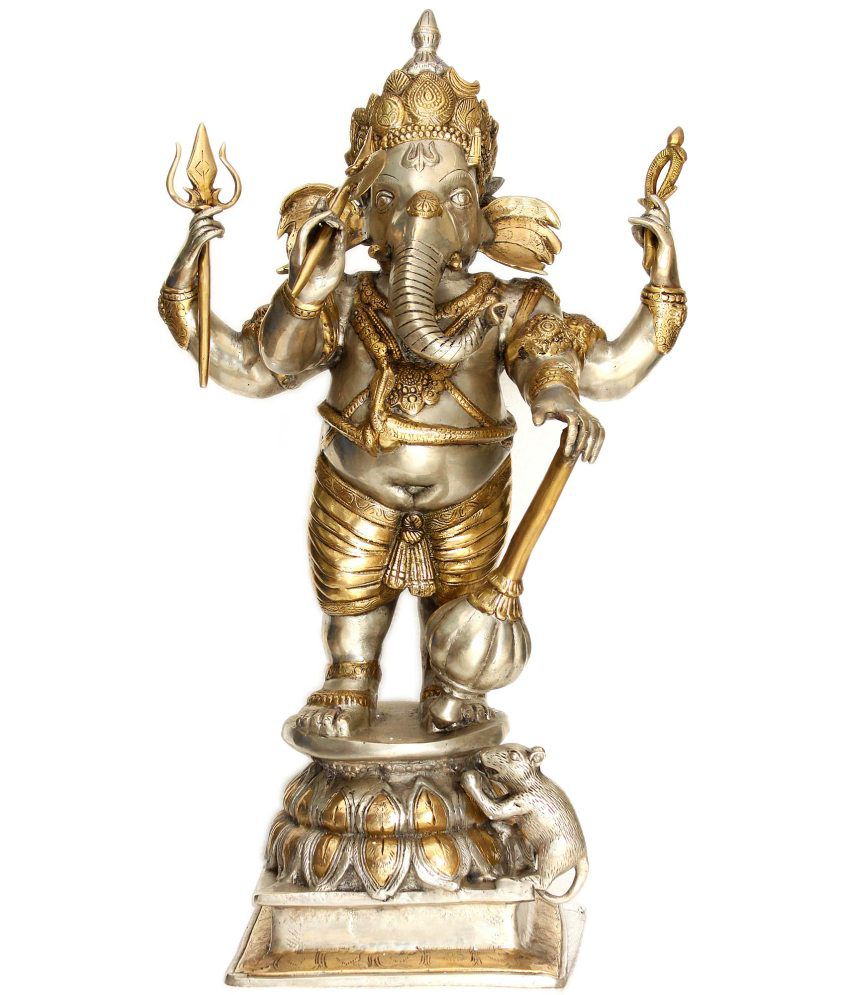Something went wrong. Please refresh the page and try again.
Something went wrong. Please refresh the page and try again.
Notifications can be turned off anytime from settings.
Item(s) Added To cart
Qty.
Something went wrong. Please refresh the page and try again.
Something went wrong. Please refresh the page and try again.
Exchange offer not applicable. New product price is lower than exchange product price
Please check the updated No Cost EMI details on the payment page
Exchange offer is not applicable with this product
Exchange Offer cannot be clubbed with Bajaj Finserv for this product
Product price & seller has been updated as per Bajaj Finserv EMI option
Please apply exchange offer again
Your item has been added to Shortlist.
View AllYour Item has been added to Shopping List
View AllSorry! Exotic India Yuddha Ganesha is sold out.


You will be notified when this product will be in stock
Hence, a warrior-like form, equipped with deadly weapons, appears to contradict deity's total personality and concept. It is not, however, so. All wars, at least such as Ganesh-like divinities undertake, are not fought in the battlefield. Ganesh symbolises the war that endlessly goes on within good conscience waging against evil, and spirit against its material bondage. Goad, noose, mace and trident are faculties of the intrinsic being. Goad is the instrument that keeps the conscience alert and forward moving. Noose keeps all faculties collected, as also drags evil to right path, but in case it continues to persist, mace crushes it or trident pierces. Helmet, designed with a crown-like forepart and spiral apex, depicts the crowning glory of mind and its spiral rise. In analogy, while meditating on Yuddha Ganapati form, mind is able to collect all its faculties and confront evil more effectively.
The posture of Ganapati reveals determination, an aspect of Yuddha Ganapati. Yuddha war or battle, is perceived as involving a lot of activity, but the Yuddha Ganapati form does not involve any. It is actually the form to meditate on and realise in the mind. It is hence devoid of all acts. Only the right foot has a little forward thrust denoting right direction. In Indian tradition, left denotes dissolution, decay and transition and the right, right path. In 'tandava', Shiva raised his left leg, as it aimed at dissolving the cosmos. When performing the 'bhanwara' ritual circumambulating the ritual fire, during a marriage ceremony in India, the bride lifts her left leg first, while the groom, his right. The bride dissolves former ties, and the groom is imperated to take her and himself to right path. Ganesh, when he is invoked in the form showing forward move, keeps the devotee to the right path. Hence, Yuddha Ganapati icons are modelled with a forward thrust.
This 33 inch tall brass image, anodised to impart silver look, and jewellery, crown, loincloth, and lotus petals, that of gold, has the moon's soothing softness and sun's glow. The square base with straight vertical rise is plain except for lotus motifs carved on the base-plate. On its left, stands mouse, the vehicle of Ganesh. The deity figure stands on a seat comprising a large size full blooming lotus. The lotus, comprising a perfect circle and hence symbolising the earth, suggests that Ganapati pervades the entire creation with his auspicious presence. Most attractive feature of the image is its brilliant jewellery including crown, and his body complexion. Each piece of jewellery appears to have come direct from a jeweller's shop. He has, around his waist, Nagabandha, serpent belt, large unfurled ears, thoughtful eyes, and a beautiful floral motif on his trunk. In its aesthetic beauty the image is unparalleled.
This description by Prof. P.C. Jain and Dr Daljeet. Prof. Jain specializeson the aesthetics of ancient Indian literature. Dr Daljeet is the chiefcurator of the Visual Arts Gallery at the National Museum of India, NewDelhi. They have both collaborated on numerous books on Indian art andculture.
The images represent actual product though color of the image and product may slightly differ.
Register now to get updates on promotions and
coupons. Or Download App